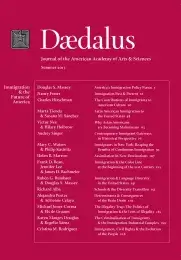Schools & the Diversity Transition
In the next quarter century, North American and Western European societies will face a profound transformation of their working-age populations as a result of immigration, combined with the aging of native majorities. These changes will intensify the challenges of integrating the children of low-status immigrants. Abundant evidence reveals that most educational systems, including that in the United States, are failing to meet these challenges; and sociological theories underscore these systems’ role in reproducing inequality. However, the history of assimilation in the United States shows that native-/immigrant-origin inequalities need not be enduring. An examination of variations across time and space suggests educational policy changes and innovations that can ameliorate inequalities.
A turning point in the history of the West is at hand. During the coming quarter-century, wealthy Western societies will undergo what could be called a “diversity transition” or a “third demographic transition.”1 Thanks to ongoing and irreversible demographic changes, spurred in substantial part by immigration, these societies will have to rely increasingly on young people of non-native and minority backgrounds to sustain their economic, cultural, and social vitality. With an imperative to integrate these youth, schools will form the crucible where the future of North American and Western European societies is forged.
The impending transition will be intensified by a demographic conjunction that links both ends of the age spectrum. At the lower end, the majority origins population, however defined, will continue to decline, while the numbers of those from immigrant and minority backgrounds will increase. At the upper end, an especially large population of majority workers will soon retire, a consequence of the baby booms that followed World War II in most Western nations.2 The retiring baby boomers are, on average, a well-educated group, including the first cohorts to experience mass higher education. They are also well positioned in the labor market, occupying a disproportionate share of the most skilled and highest-paying jobs. The critical question is: who will replace them? . . .
